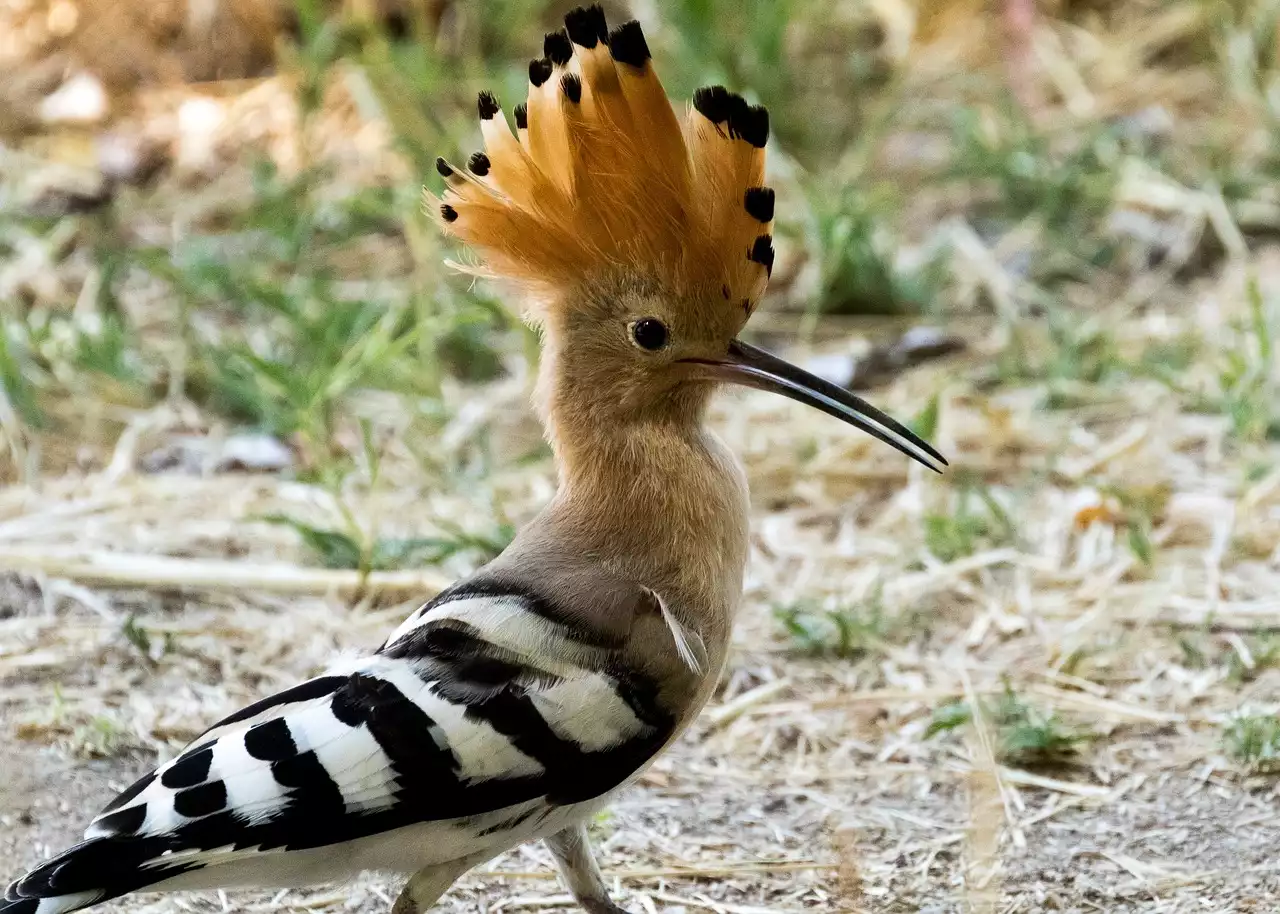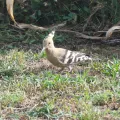Bird watching is a pastime enjoyed by many, and the hoopoe is a striking bird to observe. With its distinctive crest of feathers, vibrant colors, and signature 'oop-oop' call, the hoopoe is a captivating species to add to your bird-watching list. The Hoopoe is a large bird that can be found across much of the Old World, from Europe and North Africa to India and China. It is a species of bird that is best observed in woodlands and grasslands, where it can be seen perched atop trees, shrubs, and telegraph poles. The Hoopoe is a ground-dwelling species with a wide range of behaviors, from soaring high in the sky to foraging for food on the ground. Bird watchers can observe the hoopoe in its natural habitat, where it can be seen catching insects, flying gracefully through the air, and even making its iconic 'oop-oop' call. With its vibrant colors and unique behaviors, the hoopoe is an exciting bird to watch and a great addition to any bird-watching list.
Overview of the Hoopoe
The Hoopoe is a large bird that belongs to the order of Passeriformes, the group of perching birds that also encompasses the birds of prey, the crows and ravens, the finches, and the swallows. Eight species of hoopoe can be found across the Old World, from Europe to India and China. The English name 'hoopoe' is thought to come from the Middle English word 'hoopoe', which comes from the Anglo-French 'hoopoe' and the Latin 'Upupa', which both refer to the hoopoe's call. It is a striking species to observe with its vibrant orange and black feathers and distinctive crest. Hoopoes can grow to be between 16 and 18 centimeters in length and weigh between 72 and 86 grams. Males are generally larger than females.
Where to Find the Hoopoe
The Hoopoe is found across much of the Old World and can be seen in woodlands and grassland ecosystems. The species is widespread across Europe, as well as parts of North Africa, the Middle East, and India. A common species in Spain, the hoopoe can also be found in parts of Asia, including China and Japan. During the breeding season, you can find hoopoes in open woodlands with shrubs and trees that offer perches for nesting. During the non-breeding season, hoopoes can be found in a wider range of habitats, including cultivated fields and open areas with short vegetation.
Physical Characteristics of the Hoopoe
The Hoopoe is a strikingly beautiful species that has a wide range of vibrant colors and patterns. Male and female birds are very different in appearance, with males having bright orange and black feathers, a large crest, and a black 'mustache' pattern around their beaks. Females are more muted in color, with an overall orange-brown plumage, a smaller crest, and a brown 'mustache'. Hoopoes are ground-dwelling birds that tend to forage for food on the ground and roost in trees. They have specialized legs and feet, with long toes that are perfect for walking on soft and uneven ground. These long legs are also great for standing and leaping on the ground to catch food.
The Hoopoe's Behaviours
The Hoopoe is a species of bird that is easy to observe in its natural habitat. During the breeding season, you can see male hoopoes defending their territories and displaying to prospective mates with a distinctive 'shoomp' call. During the breeding season, you can see female hoopoes building nests and incubating eggs, and their young growing and fledging. Hoopoes are a very social species, and you can observe them foraging for food together in large flocks. When foraging, you can observe hoopoes searching for food on the ground, as well as in trees. You can also see hoopoes eating insects, including beetles, crickets, and flies.
How to Best Observe the Hoopoe
If you are new to bird watching, there are a few tips that will help you get started with observing the hoopoe. First, you should choose a time and place to observe the hoopoe. You can visit a nearby park or wooded area near your home. The best time to visit will depend on the season and the behavior of the hoopoe. During the breeding season, you can observe hoopoes defending their territories and displaying to mates in the trees. During the breeding season, you can also observe hoopoes incubating eggs and nesting in shrubs. During the non-breeding season, you can observe hoopoes foraging for food on the ground, as well as in trees.
Interesting Facts About the Hoopoe
- The hoopoe can live up to 10 years and can be found in a variety of ecosystems.
- The Hoopoe is a very social species that live in large flocks and is often seen foraging for food together.
- The hoopoe's diet mainly consists of insects, especially beetles, crickets, and flies.
- The hoopoe's nest is made of plant materials and can be found in a wide variety of locations, including on the ground, in trees, and on buildings.
- The Hoopoe is a species of bird that is easy to observe in its natural habitat.
Conclusion
The Hoopoe is a striking species to observe with its vibrant orange and black feathers and distinctive crest. With its long legs and long toes, the hoopoe is a ground-dwelling species that is easy to observe in its natural habitat. You can observe the hoopoe during the breeding season, where you can see male hoopoes defending their territories and displaying to prospective mates with a distinctive 'shoomp' call. During the breeding season, you can also observe female hoopoes building nests and incubating eggs, and their young growing and fledging. During the non-breeding season, you can observe hoopoes foraging for food on the ground, as well as in trees. With its beautiful colors, the hoopoe is a striking bird to observe in its natural habitat and a great addition to any bird-watching list.


 The Different Types of Motorcycle Clubs
The Different Types of Motorcycle Clubs.png?size=50)
 Explanation of the Health Benefits of Yoga and Meditation
Explanation of the Health Benefits of Yoga and Meditation
 The history of Jackson Guitars
The history of Jackson Guitars Where to see the Atlantic Puffin
Where to see the Atlantic Puffin The Rainbow Lorikeet - Bird Watching
The Rainbow Lorikeet - Bird Watching Bird Watching in Bali - Bird of Paradise
Bird Watching in Bali - Bird of Paradise Advice on Bird Watching Exotic Birds
Advice on Bird Watching Exotic Birds